Key takeaways
- Van Halen’s “1984” album showcases a blend of hard rock and synthesizer elements, marking a creative peak for the band.
- Key tracks like “Jump,” “Panama,” and “Hot for Teacher” illustrate their innovative approach and exceptional musicianship.
- Creating an optimal listening environment enhances the experience, allowing for appreciation of intricate details in the music.
- Sharing personal listening experiences fosters a deeper connection to the music and fellow fans, revealing new insights into the album.
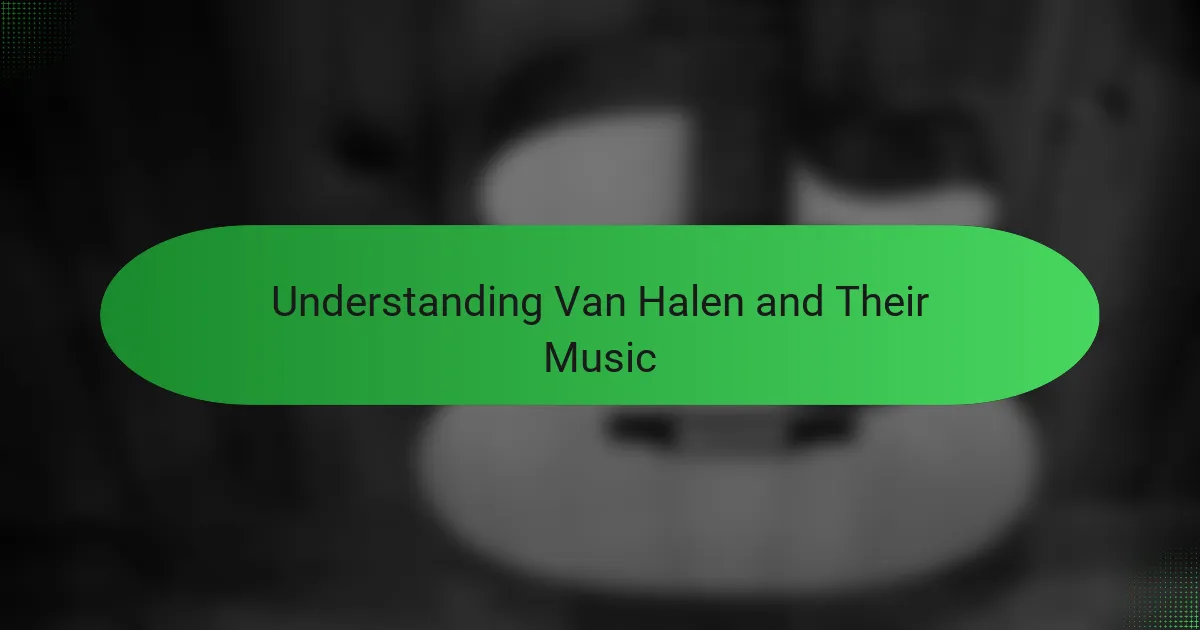
Understanding Van Halen and Their Music
Van Halen’s music has always struck me as a perfect blend of raw energy and intricate musicianship. Their ability to pair Eddie Van Halen’s revolutionary guitar techniques with David Lee Roth’s charismatic vocals creates a sound that is both powerful and approachable. Have you ever noticed how their songs can feel like an adrenaline rush but also invite you to appreciate the craft behind them?
I remember the first time I really paid attention to their album “1984”—it was like discovering a new language in rock music. The way they fuse hard rock riffs with catchy melodies makes you want to move, but there’s also this underlying complexity that keeps me hooked every time. It’s that mix of feel-good vibes and technical brilliance that truly defines Van Halen’s music for me.
Understanding Van Halen means recognizing their fearless approach to pushing musical boundaries. They didn’t just play rock; they reinvented what it could be. This mindset is what keeps their music fresh and why “1984” remains relevant decades later—because it captures that spirit of innovation and excitement I still find inspiring.
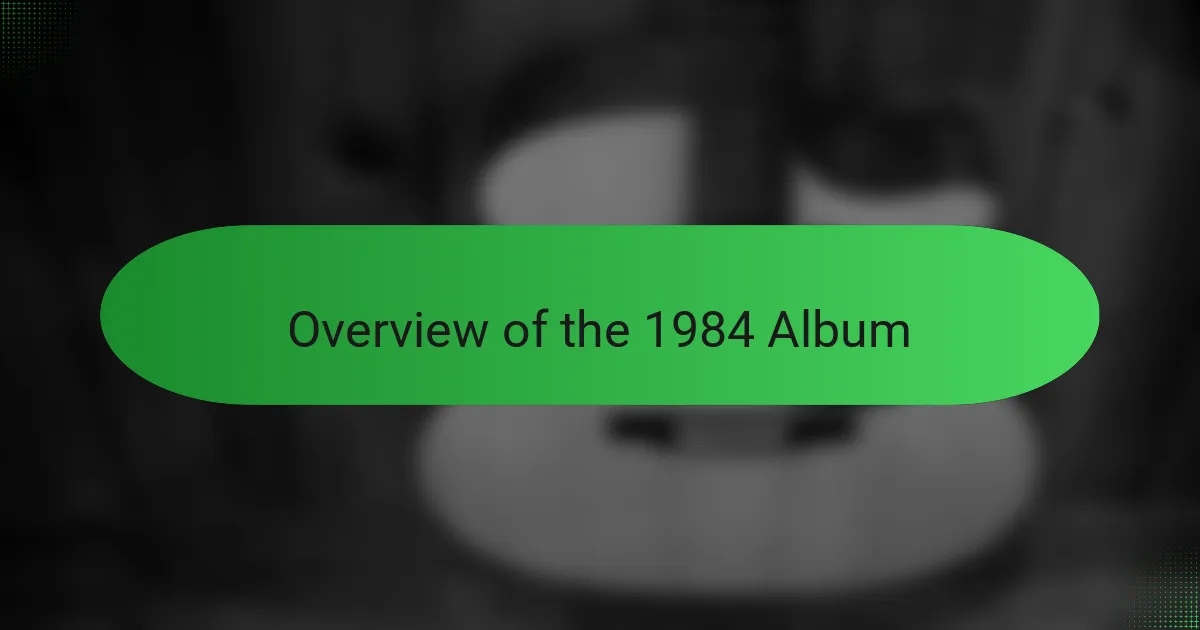
Overview of the 1984 Album
The 1984 album stands out to me as a milestone that captures Van Halen at their creative peak. It’s where they seamlessly blended their signature hard rock sound with more experimental elements, like the iconic synth lines that surprised many fans at the time. Have you ever wondered how they managed to make synthesizers feel just as essential as Eddie’s guitar solos?
Listening to tracks like “Jump,” I remember feeling this surge of energy that was both new and familiar. The album balances explosive anthems with moments that showcase the band’s musical sophistication, and that contrast still keeps me coming back. It’s like Van Halen opened a door to a fresh sound without losing their core identity.
What’s fascinating about the 1984 album is how it captures a snapshot of a band evolving yet confident in their style. It wasn’t just about making hits; it was about crafting songs that stood the test of time. This dedication to quality and innovation is why I think the album remains a powerful listening experience decades later.

Key Songs and Musical Elements
When I think about key songs on “1984,” “Jump” immediately comes to mind—its synth riff feels like an open invitation to rock out, yet it’s also ridiculously catchy and upbeat. That track, with its blend of synthesizer and Eddie’s guitar bursts, really shows how Van Halen wasn’t afraid to mix things up and challenge what hard rock could sound like.
Then there’s “Panama,” which for me perfectly captures the raw, energetic guitar work Eddie is famous for. The driving riffs and tight rhythm section create this unstoppable momentum that still gets my heart racing every time. Have you ever noticed how the guitar tone on this track sounds both aggressive and polished at once? It’s like Eddie was painting with sound—bold, technical, but always musical.
I also can’t forget “Hot for Teacher,” where the complex rhythms and lightning-fast guitar solos pull you right into Van Halen’s playful yet intense world. The interplay between the drums and guitar here is something I’ve admired for years—it’s tight but feels spontaneous. It makes me wonder how much fun they must have had crafting these bits while staying so precise. To me, these elements make “1984” not just a collection of songs, but a masterclass in balancing technical skill with pure rock excitement.
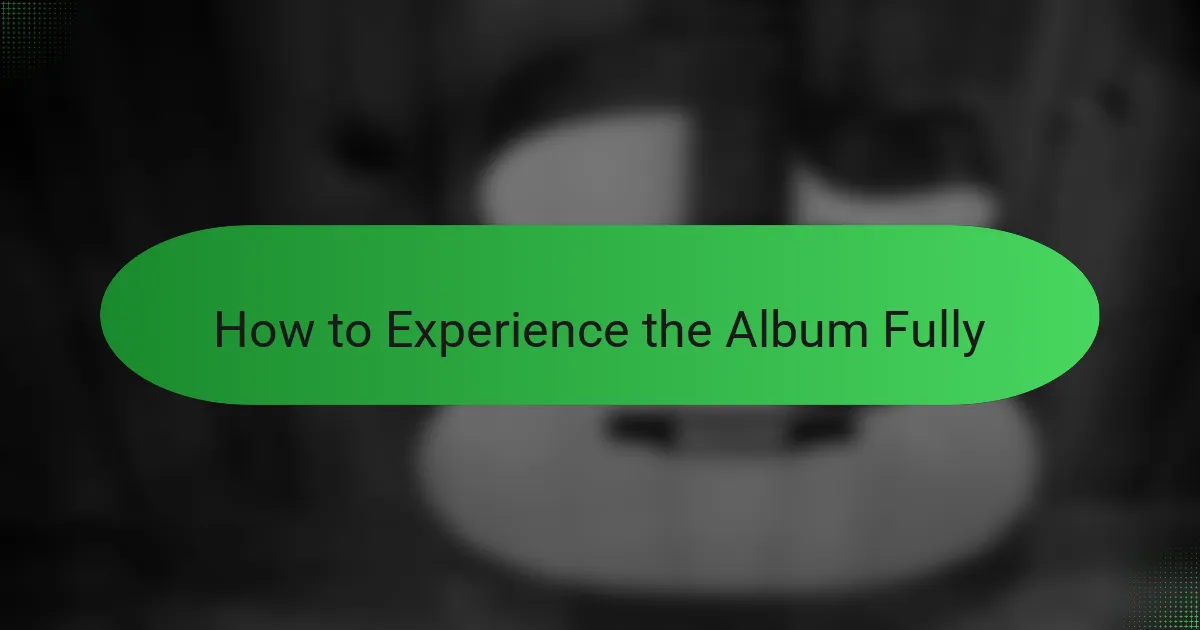
How to Experience the Album Fully
To experience “1984” fully, I always make sure to listen in a quiet space where every guitar lick and synth note can shine through. Have you ever caught yourself tapping along to “Jump” only to suddenly realize you’re hooked on Eddie’s guitar layering in the background? That moment of realizing how intricate the music is, beyond just the catchy hooks, makes the album come alive for me.
For me, it’s also about the order in which I play the songs. I resist skipping ahead because each track builds on the mood of the last, creating a journey that feels both nostalgic and electrifying. When I listen this way, I feel like I’m right there in the studio with the band, sharing in their creative spark.
And I’ve found that revisiting the album with good headphones reveals details I missed before—subtle keyboard textures, drum fills, or vocal nuances that add depth to the experience. Have you ever been surprised by something new every time you listen to a favorite album? That’s exactly how “1984” keeps pulling me back in.
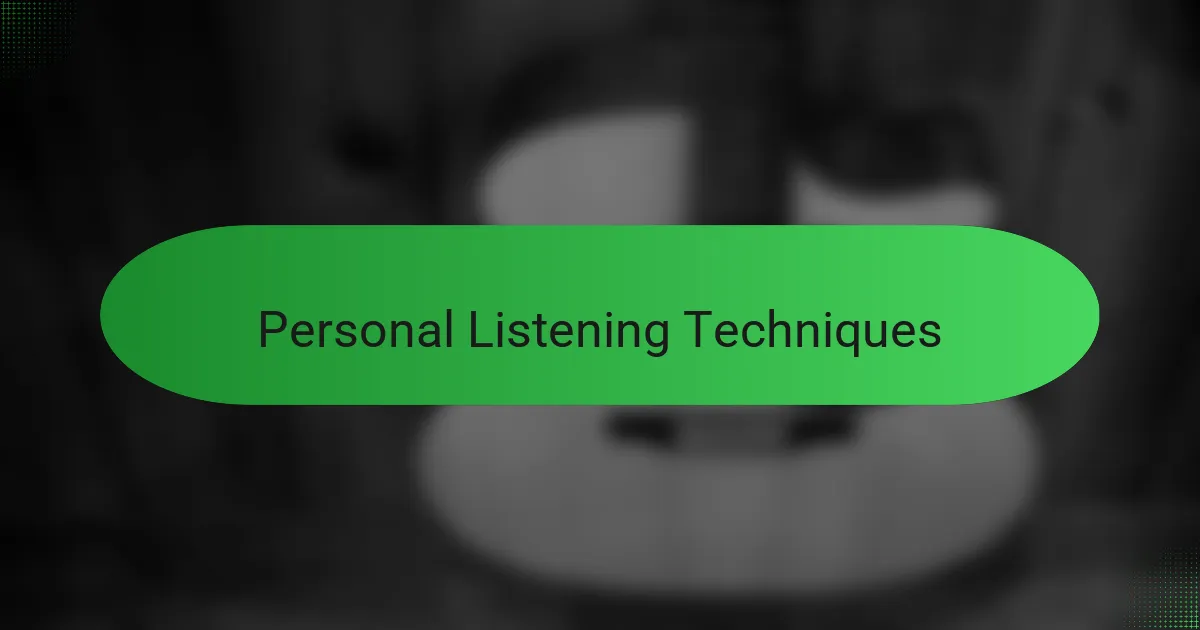
Personal Listening Techniques
When I listen to “1984,” I like to start by closing my eyes and focusing solely on the layers of sound. Have you ever tried to pick out Eddie’s guitar nuances versus the synth lines? Doing this helps me appreciate the depth and creativity that sometimes gets lost in the excitement of the song.
Sometimes, I find it helpful to adjust the volume dynamically—lowering it during the verses to catch the subtle keyboard work, then cranking it up during guitar solos to feel the full punch. This way, each element gets its moment, and the album feels more immersive, almost like a live performance just for me.
I also enjoy mixing listening modes, from full speakers that fill the room to intimate headphone sessions late at night. Each setting uncovers different emotions and details; it’s like rediscovering the album all over again. Have you noticed how the mood can change depending on where and how you listen? For me, these rituals turn every playthrough into a fresh experience.
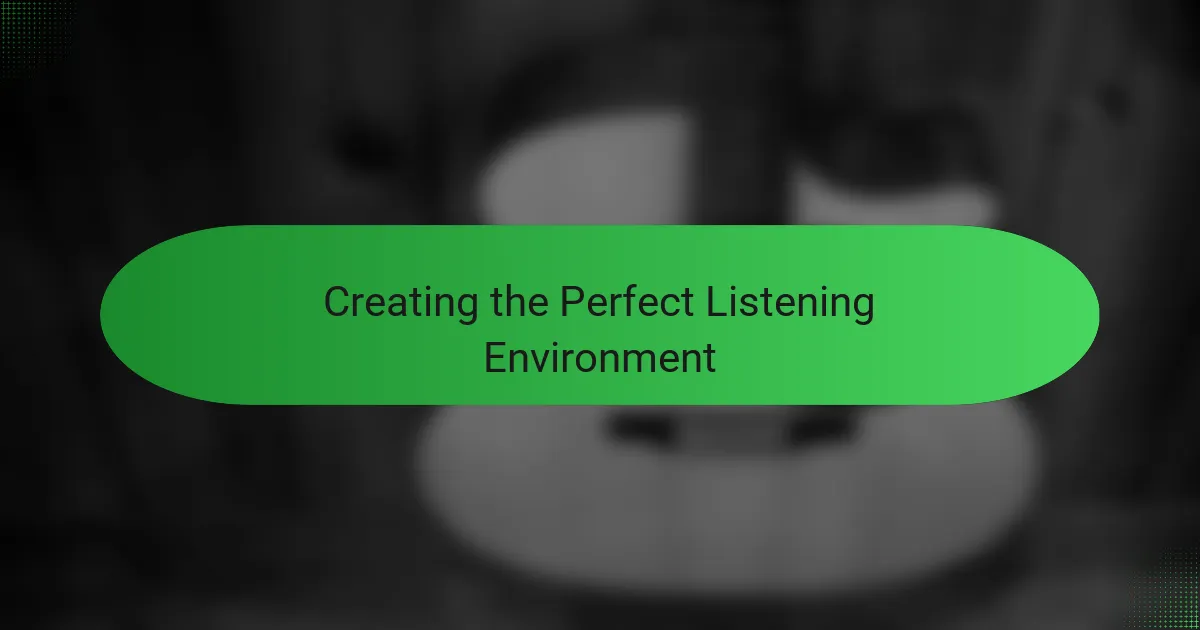
Creating the Perfect Listening Environment
Creating the perfect listening environment for “1984” means carving out a space where nothing distracts from the music’s powerful energy. I always choose a room with minimal background noise and dim lighting, almost like setting a stage for Van Halen’s performance to command my full attention. Have you ever noticed how much clearer Eddie’s guitar tones become when the world around you quiets down?
I remember one evening, I turned off all electronics except my stereo and just let the album play from start to finish. It felt like the band was right there in the room with me—each synth swell and drum hit hitting with a raw, unfiltered intensity. That kind of focused listening transforms the album from just songs into a full sensory experience.
Sometimes, the right seat in the room makes a huge difference too. Sitting where the speakers create a perfect soundstage lets me catch subtle details, like keyboard nuances I never heard before. When you create that optimal space, doesn’t it almost feel like the music breathes around you rather than just playing through speakers? For me, that’s the magic of a truly great listening environment.

Sharing and Discussing Your Experience
When I share my experience listening to “1984” with fellow fans, I find the conversation sparks new appreciation for the album’s layers. Have you ever noticed how someone’s perspective on a song can reveal details you never caught? Talking about those moments when Eddie’s guitar solo sends chills or when the synths uplift “Jump” always makes me relive the excitement all over again.
Sometimes, these discussions lead me to revisit tracks with fresh ears. A friend once pointed out a subtle drum fill in “Hot for Teacher” that I’d missed despite years of listening—how amazing is it that Van Halen’s music keeps offering surprises, even decades later? Sharing these insights feels like joining a community where every fan’s viewpoint adds to the collective love for the band’s artistry.
I also enjoy hearing how others make the album their own. Whether it’s a first listen at a friend’s party or a late-night headphone session, these stories remind me that music is deeply personal yet universal. When you share your experience, have you noticed how it deepens your connection not just to the album, but to the people who love it just as much? That’s the beauty of discussing Van Halen—it’s an ongoing journey that never gets old.